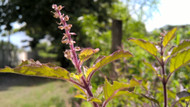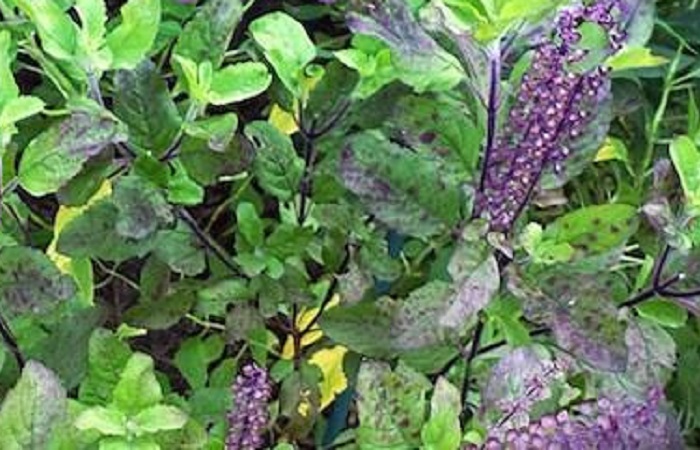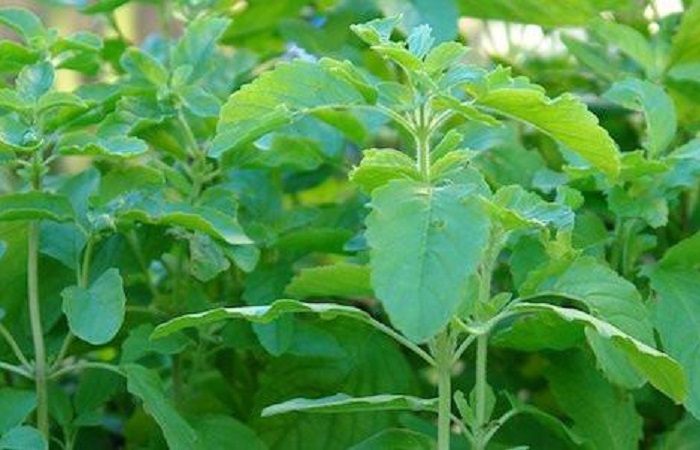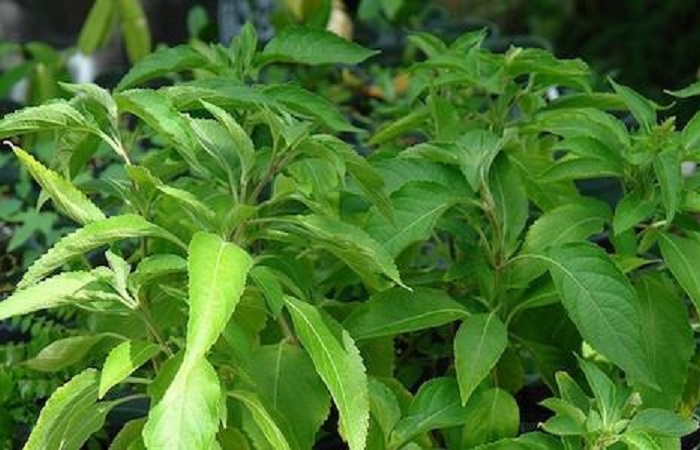Tulsi - Holy Basil
Posted by Selina Law on Sep 5th 2018
It may not be everyone’s tradition or belief system to pray to a Holy Basil plant every morning to ensure good health and well-being of his/her family, but this “Queen of the Herbs” from India carries many health benefits that most everybody can surely appreciate. Holy Basil is a cousin of the more common sweet basil (Ocimum basilicum). Called Tulsi or Sacred Basil in its native India, it is used to support our body’s healthy response to stress, natural detoxification, and restoration of balance and harmony.
Holy Basil has been revered throughout India for thousands of years. Hindus view it as a manifestation of the goddess Lakshmi (the goddess of wealth, fortune and prosperity) and is bestowed with great spiritual powers. Ayurvedic (the traditional Hindu system of medicine) texts describe Holy Basil as a pillar of holistic herbal medicine. It is considered an adaptogen—a natural substance that helps the body adapt to stress and to exert a normalizing effect upon bodily processes. Holy Basil is also known in India as a powerful anti-aging supplement.
Though Holy Basil originates from India, it now grows in Australia, Africa and some Middle Eastern countries. There are different varieties of Holy Basil. All of them belong to the mint family. Each variety has a slightly different look, taste and smell. Three commonly seen varieties are:
Krishna (Ocimum tenuiflorum/ Ocimum sanctum) is known for its peppery crisp taste. The plant has dark green to purple leaves, stems and blossoms. It is named after the blue skinned god as the dark purple leaves resemble this color.
Rama (Ocimum tenuiflorum/ Ocimum sanctum) is known for its cooling and mellow flavor. The plant is short, has green leaves, white-to-purplish blossoms, and a green or purplish stem. It is the most common type found in cultivation in the U.S.
Vana (Ocimum gratissimum) is known for its fragrance. The plant has green leaves and stem, with white blossoms. It is found in the Himalayas and the plains of India. It grows wild in Asia and Africa and is used medicinally there as well.
Holy Basil is traditionally taken as an herbal tea, dried powder, fresh leaf, or mixed with ghee. It is not typically used for cooking. However, in Thailand it is a very popular culinary ingredient. As a matter of fact, Holy Basil is an important ingredient in one of the famous Thai dishes, chicken with Holy Basil or “gai pad grapow”.
Many traditional Hindus worship an alter bearing a Holy Basil plant that is placed in the courtyard of their home or in another prominent location. Today, Holy Basil remains one of the most cherished of India's sacred plants.
Warning: Holy Basil may modify glucose regulation. Also, do not use Holy Basil during pregnancy.
The information, including but not limited to, text, graphics, images and other material contained on this website are for informational purposes only. The purpose of this website is to promote broad consumer understanding and knowledge of various health topics related to tea (both true and herbal). It is not intended to be a substitute for professional medical advice, diagnosis or treatment. Always seek the advice of your physician or other qualified health care provider with any questions you may have regarding a medical condition and never disregard professional medical advice or delay in seeking it because of something you have read on this website.




